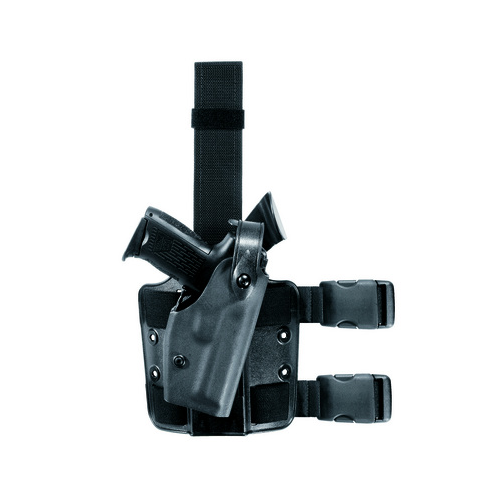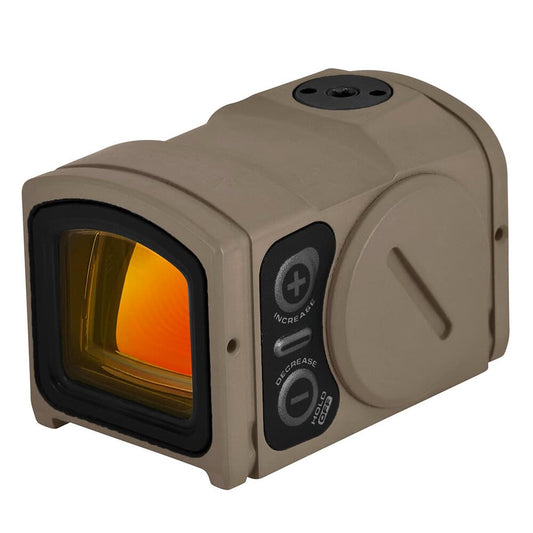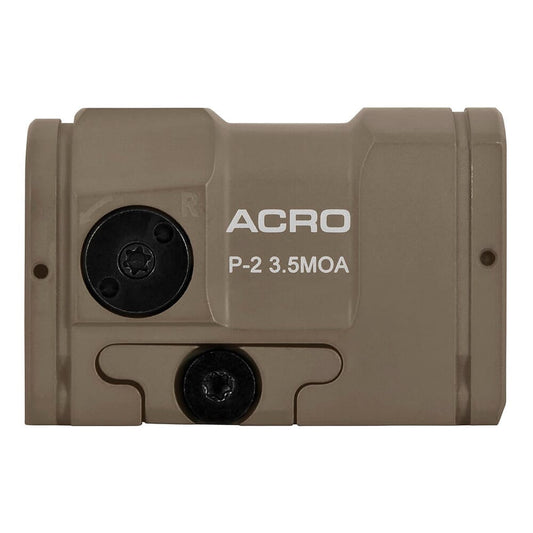

Product Description
Single Strap Leg Shroud with Drop Flex Adapter (DFA) & QLS 22 is engineered to enhance the versatility of your Safariland holster. This innovative system allows for a swift transition of holster and accessories from thigh carry to various mounting positions, ensuring quick access when it matters most. Featuring a Quick Locking System (QLS) 22 Receiver Plate, it seamlessly integrates with holsters equipped with a QLS 19 Locking Fork, simplifying your tactical setup.
The Drop Flex Adapter elevates the holster height on your thigh, promoting better stability and comfort during movement. Its single strap design offers a low-profile carry, while the adjustable silicone strap ensures a secure fit without slipping. Compatible with belt widths ranging from 2 to 2.25 inches (50mm - 58mm), this leg shroud provides the flexibility you need in dynamic environments.
Features:
- QUICK TRANSFER for effortless movement between thigh carry and other mounting locations.
- ENHANCED STABILITY with Drop Flex Adapter for improved holster height and comfort.
- LOW-PROFILE DESIGN minimizes bulk for a more streamlined carry experience.
- SECURE FIT with silicone strap that prevents slippage during movement.
- COMPATIBLE with QLS 19 Locking Fork for easy integration with existing setups.
- ADJUSTABLE for belt widths of 2 - 2.25 inches (50mm - 58mm) to fit a variety of gear.
- LIGHTWEIGHT MATERIAL ensures agility without compromising durability.
- USER-FRIENDLY INSTALLATION for quick setup and adjustments in the field.
Technical Specifications Table
| Feature | Details |
|---|---|
| Belt Compatibility | 2 - 2.25 inches (50mm - 58mm) |
| Weight | Lightweight |
| Material | Durable synthetic materials |
| Mounting Type | QLS 22 Receiver Plate |
| Design | Single Strap with Drop Flex Adapter |
What's in the Box?
- Single Strap Leg Shroud
- Drop Flex Adapter (DFA)
- QLS 22 Receiver Plate
- Installation Instructions
Customer Reviews
"This leg shroud is a game changer for my tactical setup. Quick to adjust and very stable while moving." - John D.
"I love how it allows me to switch holsters easily. The silicone strap keeps everything in place!" - Sarah T.
"Perfect height for my thigh carry, and it doesn’t bounce around during use." - Mike R.
FAQ
What is the advantage of using the Drop Flex Adapter?
The Drop Flex Adapter elevates the holster, improving comfort and accessibility. It also enhances stability during movement, making it ideal for active scenarios.
How do I attach the QLS 22 Receiver Plate?
The QLS 22 Receiver Plate easily connects to any Safariland holster equipped with a QLS 19 Locking Fork. Simply align and secure the components for a solid attachment.
Can this leg shroud be used with other brands of holsters?
This leg shroud is specifically designed for Safariland holsters. For optimal performance, using it with compatible Safariland models is recommended.
Is the leg shroud adjustable for different thigh sizes?
Yes, the leg shroud features an adjustable silicone strap that accommodates thigh sizes across a range, ensuring a secure fit for various users.
How do I maintain the leg shroud for longevity?
Regularly inspect the strap and mounting components for wear. Clean the leg shroud with mild soap and water to remove dirt or debris, ensuring it remains functional and reliable.
Similar Models
Looking for additional tactical gear? Explore our collection of Safariland accessories, including the QLS 19 Locking Fork for enhanced compatibility and the Tactical Belt for maximum support. Discover the full range for all your tactical needs.
You May Also Like
Here’s some of our most similar products people are buying. Click to discover trending style.








